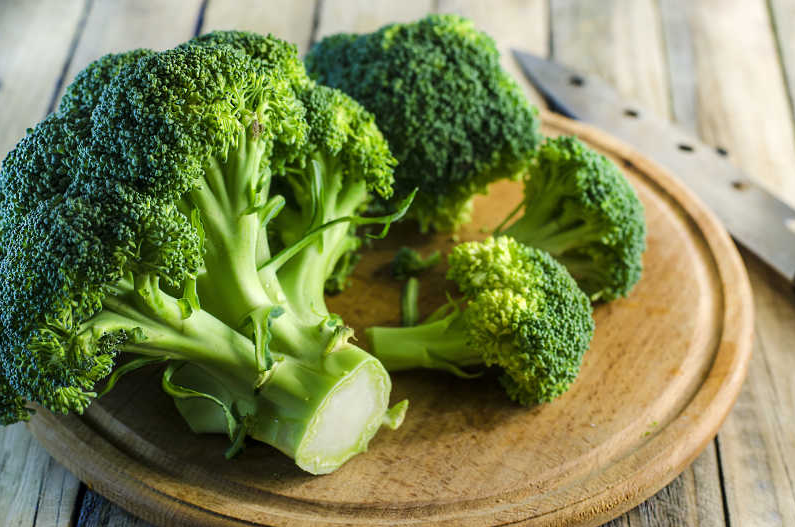
What Is Sulforaphane ?
Sulforaphane is an isothiocyanate, which is obtained by hydrolysis of glucosinolate by myrosinase enzyme in plants. It is abundant in cruciferous plants such as broccoli, kale, and northern round carrots. It is a common antioxidant and the most effective plant active substance in anti-cancer effects found in vegetables.
Physical And Chemical Properties of Sulforaphane
Physical properties
1. Appearance:
- Sulforaphane is usually a colorless to pale yellow crystalline solid or oily liquid.
2. Solubility:
- Water Solubility: Sulforaphane has low solubility in water.
- Solubility in organic solvents: Sulforaphane has good solubility in organic solvents such as ethanol, methanol and dichloromethane.
3. Melting point:
- The melting point of Sulforaphane ranges from 60-70°C.
4. Boiling Point:
- The boiling point of Sulforaphane is approximately 142°C (at a pressure of 0.05 mmHg).
5. Density:
- The density of Sulforaphane is approximately 1.3 g/cm³.
Chemical Properties
1. Chemical Structure:
- The chemical name of Sulforaphane is 1-isothiocyanate-4-methylsulfonylbutane, its molecular formula is C6H11NOS2, and its molecular weight is 177.29 g/mol.
- Its structure contains an isothiocyanate (-N=C=S) group and a methylsulfonyl (-SO2CH3) group.
2. Stability:
- Sulforaphane is relatively stable under neutral and weakly acidic conditions, but easily decomposes under strong acidic and alkaline conditions.
- Sensitive to light and heat, prolonged exposure to light and high temperatures can cause its degradation.
3. Reactivity:
- Sulforaphane has high chemical reactivity and can react with a variety of biological molecules.
- Its isothiocyanate group can covalently combine with sulfhydryl (-SH) and amino (-NH2) groups to form stable addition products.
4. Antioxidant:
- Sulforaphane has powerful antioxidant properties, able to neutralize free radicals and reduce oxidative stress damage to cells.
5. Biological Activity:
- Sulforaphane has a variety of biological activities, including anti-cancer, anti-inflammatory, detoxification and neuroprotection.
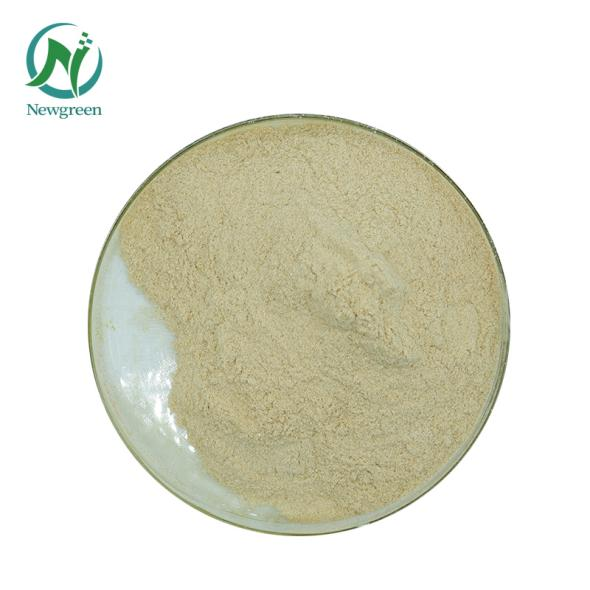
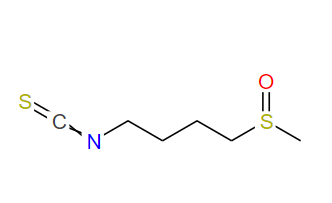
Source of Sulforaphane
Main sources
1. Broccoli:
- Broccoli Sprouts: Broccoli sprouts are one of the highest sources of Sulforaphane. Research shows that the Sulforaphane content in broccoli sprouts is dozens of times higher than that in mature broccoli.
- Ripe Broccoli: Although the Sulforaphane content is not as high as broccoli sprouts, mature broccoli is still an important source of Sulforaphane.
2. Cauliflower:
- Cauliflower is also a cruciferous vegetable rich in sulforaphane, especially its young shoots.
3. Cabbage:
- Cabbage, including red and green cabbage, contains certain amounts of Sulforaphane.
4. Mustard Greens:
- Mustard greens are also a good source of Sulforaphane, especially their young shoots.
5. Kale:
- Kale is a nutrient-dense cruciferous vegetable that contains Sulforaphane.
6. Radish:
- Radish and its sprouts also contain Sulforaphane.
7. Other cruciferous vegetables:
- Other cruciferous vegetables such as Brussels Sprouts, Turnip, Chinese Kale, etc. also contain a certain amount of Sulforaphane.
Sulforaphane generation process
Sulforaphane is not present directly in these vegetables, but in its precursor form, glucose isothiocyanate (glucoraphanin). When these vegetables are cut, chewed or broken, the cell walls rupture, releasing an enzyme called myrosinase. This enzyme converts glucose isothiocyanate to Sulforaphane.
Recommendations for increasing your Sulforaphane intake
1.Edible sprouts: Choose to eat sprout parts such as broccoli sprouts because they contain higher Sulforaphane content.
2. Light Cooking: Avoid overcooking, as high temperatures will destroy glucosinosidase and reduce the production of Sulforaphane. Mild steaming is a better cooking method.
3. Raw food: Raw food of cruciferous vegetables can retain glucosinolate enzyme to the maximum extent and promote the production of Sulforaphane.
4. Add mustard: If you need to cook, you can add some mustard before eating, because mustard contains glucosinolates, which can help produce Sulforaphane.
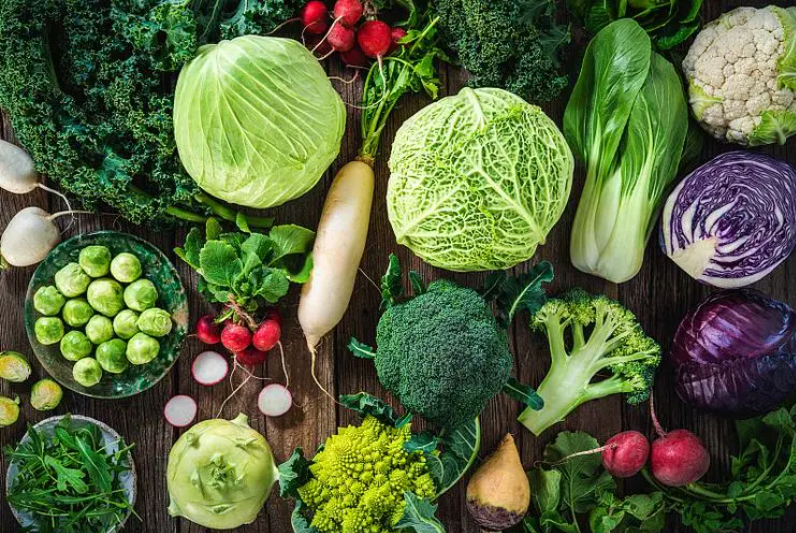
What Are The Benefits Of Sulforaphane ?
Sulforaphane has various health benefits, here are the main effects and benefits of Sulforaphane:
1. Antioxidant:
- Neutralizing Free Radicals: Sulforaphane has powerful antioxidant properties that neutralize free radicals and reduce the damage to cells caused by oxidative stress.
- Activate antioxidant enzymes: Enhance the antioxidant capacity of cells by activating the antioxidant enzyme system in the body, such as glutathione peroxidase and superoxide dismutase.
2. Anti-cancer:
- Inhibit cancer cell growth: Sulforaphane can inhibit the growth and proliferation of a variety of cancer cells, including breast cancer, prostate cancer, and colon cancer.
- Induce apoptosis: Reduce the survival rate of cancer cells by inducing apoptosis (programmed cell death) of cancer cells.
- Inhibit tumor angiogenesis: Prevent the formation of new blood vessels in tumors, limit the nutrient supply to tumors, thereby inhibiting tumor growth.
3. Anti-inflammatory:
- Reduce Inflammatory Response: Sulforaphane has anti-inflammatory properties, which can inhibit the release of inflammatory mediators and reduce inflammatory responses.
- Protect Tissue: Protects tissue from damage caused by inflammation by reducing inflammation.
4. Detoxification:
- Promote the production of detoxification enzymes: Sulforaphane can activate the detoxification enzyme system in the body, such as glutathione-S-transferase, to help eliminate harmful substances and toxins from the body.
- Enhance liver function: Protect liver health by promoting the liver's detoxification function.
5. Neuroprotection:
- Protect Nerve Cells: Sulforaphane has neuroprotective effects and is able to protect nerve cells from damage by oxidative stress and inflammation.
- Prevents Neurodegenerative Diseases: Research suggests that Sulforaphane may help prevent and slow the progression of neurodegenerative diseases such as Alzheimer's disease and Parkinson's disease.
6. Cardiovascular Health:
- REDUCE BLOOD PRESSURE: Sulforaphane helps lower blood pressure and improve cardiovascular health.
- Reduces arteriosclerosis: Through antioxidant and anti-inflammatory effects, Sulforaphane can reduce the risk of arteriosclerosis and protect the cardiovascular system.
7. Antibacterial and Antiviral:
- Pathogen Inhibition: Sulforaphane has antibacterial and antiviral properties that inhibit the growth and reproduction of a variety of pathogens.
- Enhance immune function: Improve the body's ability to fight infections by enhancing the function of the immune system.
What Is The Applications Of Sulforaphane ?
DIETARY SUPPLEMENTS:
1.Antioxidant supplements: Sulforaphane is often used in antioxidant supplements to help neutralize free radicals and reduce the damage of oxidative stress to the body.
2.Anti-cancer supplement: Used in anti-cancer supplements to help inhibit the growth and proliferation of cancer cells and enhance the body’s anti-cancer ability.
FUNCTIONAL FOOD:
1.HEALTHY FOODS: Sulforaphane can be added to functional foods such as health drinks and nutrition bars to provide additional health benefits.
2.Vegetable Extract: As an extract of cruciferous vegetables, it is widely used in various health foods.
SKIN CARE PRODUCTS:
1.Antioxidant skin care products: Sulforaphane is used in antioxidant skin care products to help neutralize free radicals and reduce oxidative damage to the skin.
2.Anti-inflammatory skin care products: Used in anti-inflammatory skin care products to help reduce the inflammatory response of the skin and protect skin health.
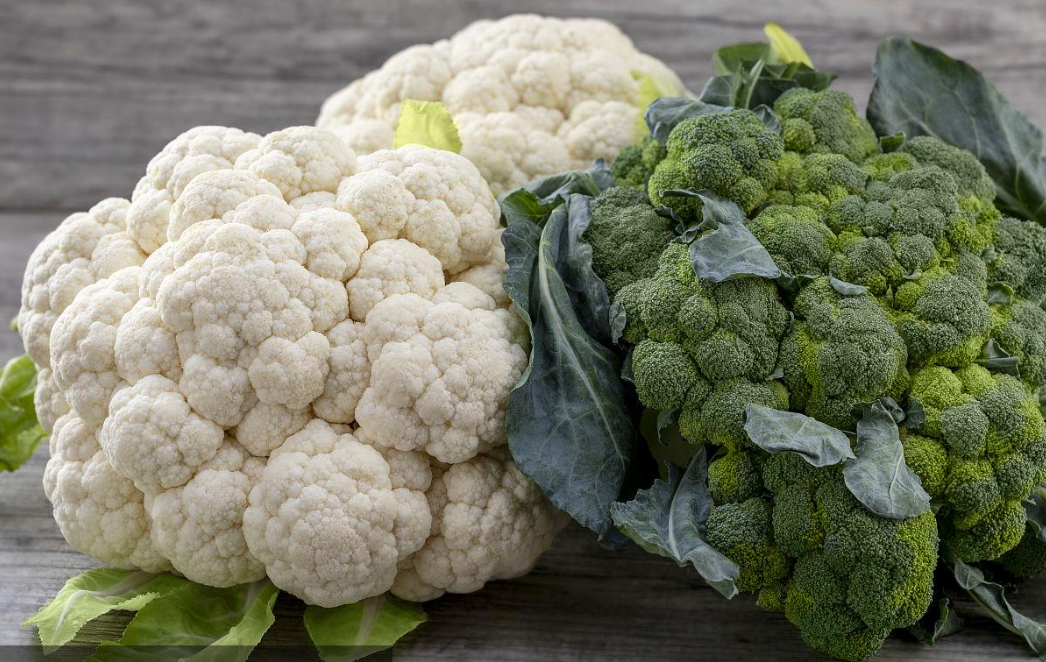
Related Questions You can Be Interested In :
What are the side effects of sulforaphane ?
Sulforaphane is a naturally occurring organosulfur compound found primarily in cruciferous vegetables such as broccoli, cauliflower, kale, and mustard greens. Although Sulforaphane has many health benefits, in some cases, some side effects may occur. The following are potential side effects and precautions for Sulforaphane:
1. Gastrointestinal discomfort:
- Bloating and Gas: Some people may experience symptoms of bloating and gas after taking high doses of Sulforaphane.
- Diarrhea: High doses of Sulforaphane may cause diarrhea, especially in sensitive individuals.
- Stomach Pain and Nausea: Some people may experience stomach pain and nausea after ingesting Sulforaphane.
2. Allergic Reaction:
- Skin Reactions: A small number of people may have an allergic reaction to Sulforaphane, manifesting as itching, red rash, or hives.
- Trouble breathing: Rarely, Sulforaphane may cause a serious allergic reaction, such as difficulty breathing or swelling of the throat. If these symptoms occur, seek medical attention immediately.
3. Impact on thyroid function:
- Goiter: Cruciferous vegetables contain some natural thyroid-inhibiting substances (such as thiocyanates). Long-term intake of large amounts may affect thyroid function and lead to enlargement of the thyroid (goiter).
- Hypothyroidism: In rare cases, long-term, high intake of Sulforaphane may affect thyroid hormone synthesis, leading to hypothyroidism.
4. Drug Interactions:
- Anticoagulants: Sulforaphane may affect the effectiveness of anticoagulants (such as warfarin) and increase the risk of bleeding.
- Other Drugs: Sulforaphane may interact with other drugs, affecting their metabolism and effectiveness. If taking Sulforaphane while taking medications, you should consult your doctor.
Notes:
1. Moderate intake:
- Control Dosage: Although Sulforaphane has many health benefits, it should be taken in moderation to avoid overdose. It is generally recommended to obtain Sulforaphane through the consumption of cruciferous vegetables rather than relying on high-dose supplements.
2. Individual differences:
- Sensitive People: Some people may be more sensitive to Sulforaphane and prone to side effects. This group of people should pay special attention to their intake and make timely adjustments when discomfort occurs.
3. Pregnant and lactating women:
- USE WITH CAUTION: Pregnant and nursing women should be cautious when ingesting Sulforaphane, preferably under the guidance of a physician.
4. Patients with chronic diseases:
- CONSULT A PHYSICIAN: Patients with chronic medical conditions (such as thyroid disease, liver disease, or kidney disease) should consult a physician before ingesting Sulforaphane to ensure safety.
How long can I take sulforaphane ?
Dietary Intake: Safe for long-term use as part of a balanced diet rich in cruciferous vegetables.
Supplemental Intake: Generally safe for short-term use; long-term use should be guided by a healthcare professional.
What cancers does sulforaphane prevent?
Sulforaphane has a wide range of anti-cancer properties and can prevent and inhibit many types of cancer, including breast, prostate, colon, lung, stomach, bladder and skin cancers. Its main mechanisms include inhibiting the growth and proliferation of cancer cells, inducing apoptosis, inhibiting tumor angiogenesis, antioxidant, anti-inflammatory and detoxification, etc. By consuming sulforaphane-rich cruciferous vegetables, the risk of many types of cancer can be effectively reduced.
Does sulforaphane increase estrogen?
Current research shows that Sulforaphane may affect the metabolism and effects of estrogen through multiple mechanisms, including promoting estrogen detoxification, modulating estrogen metabolic pathways, inhibiting estrogen receptors, and reducing estrogen signaling.
Post time: Sep-19-2024





